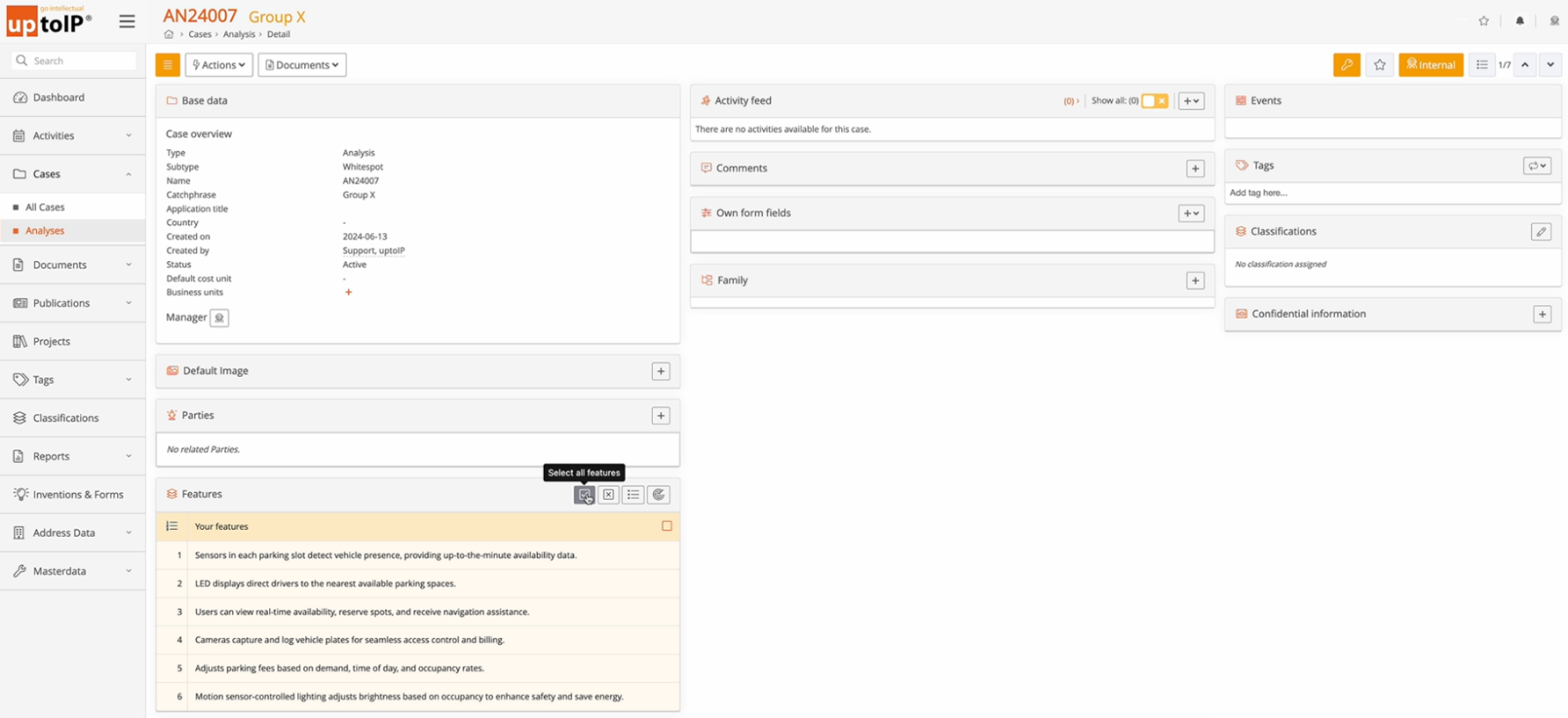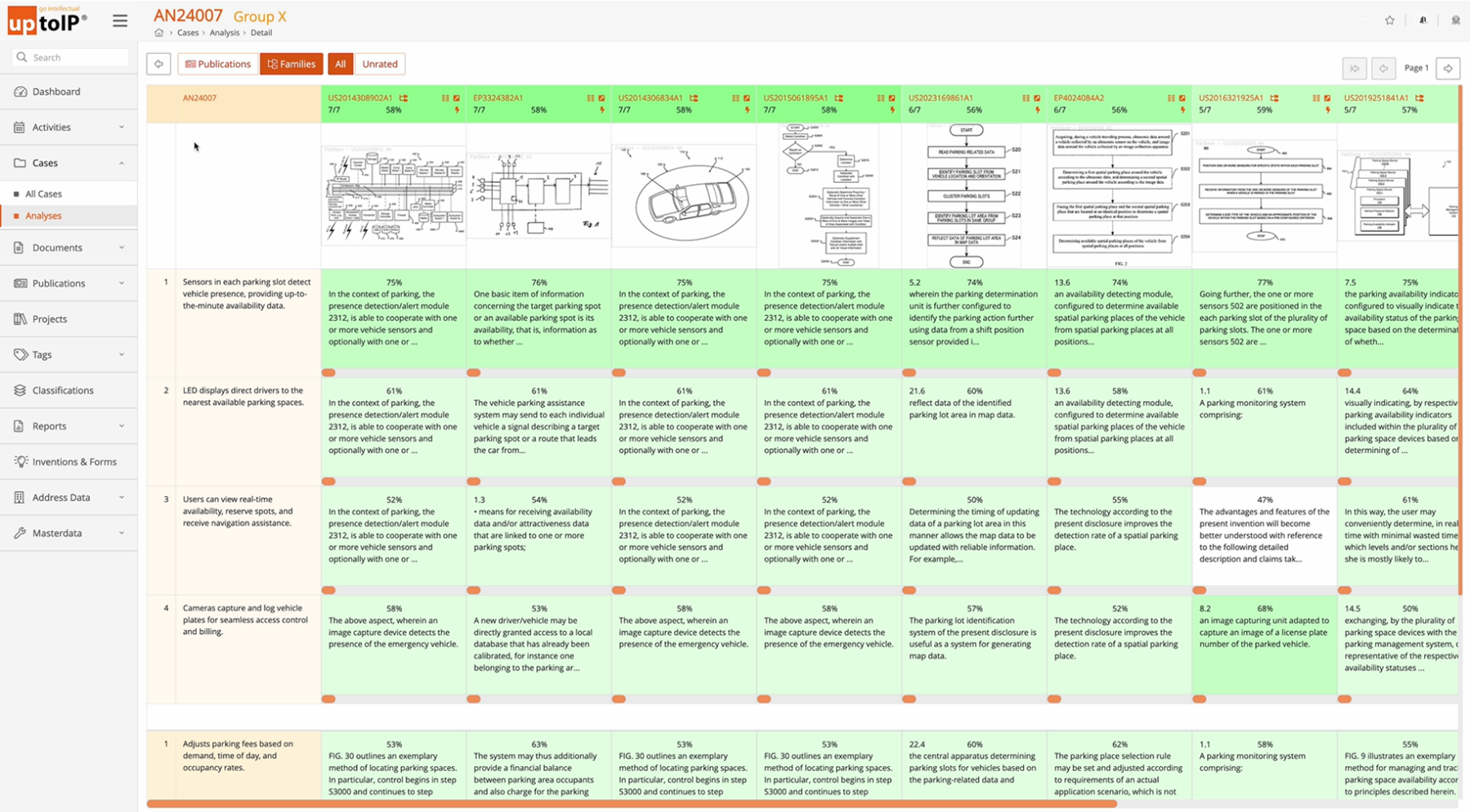
AI-based patent👉 A legal right granting exclusive control over an invention for a limited time. searching tools can significantly enhance the invention👉 A novel method, process or product that is original and useful. process by helping inventors efficiently and effectively search and analyse patent data. This allows them to identify relevant prior art, uncover white spots, and generate new ideas.
Specifically, AI-based patent searching tools can support the invention process in the following ways:
- Comprehensive prior art search: AI algorithms can quickly and accurately search through vast amounts of patent data, including full-text documents, and patent drawings. This helps inventors identify relevant prior art that may not be found using traditional keyword-based search methods.
- White spot identification: AI tools can analyse patent data to map the technology landscape and identify white spots, which are areas where there is little or no prior art. This can help inventors focus their R&D efforts on developing actually novel inventions that are more likely to be patentable.
- Idea generation: AI can help inventors generate new ideas by identifying patterns and trends in patent data. This can spark creativity and lead to new inventions that may not have been considered otherwise.
- Patentability assessment: AI tools can help inventors and IP experts assess the patentability of inventions by comparing them to prior art and identifying potential novelty👉 Requirement that an invention must be new and not previously disclosed. and non-obviousness issues. This can help inventors make informed decisions about whether to pursue patent protection for their inventions.
Example: The Patentbutler Tool
The Patentbutler tool is an AI-based patent searching tool that can support the invention process in a number of ways. For example, the tool can be used to:
- Identify relevant prior art: The Patentbutler identifies relevant prior art by leveraging AI algorithms to search through a vast database of patent documents. These algorithms can analyse the full-text and patent drawings of patent documents to identify key features and concepts. When a user inputs the features of a new invention into the Patentbutler, the Patentbutler compares the features to those found in existing patent documents, helping inventors assess the novelty of their ideas and identify potential patentability issues.
- Generate new ideas: By analysing patent data, Patentbutler can identify areas in the technology landscape where there is little or no prior art, also known as “white spots”. This helps inventors focus their efforts on developing novel inventions in those white spots that are more likely to be patentable. This also can help inventors understand the direction in which the technology is moving and identify areas where there is further potential for innovation👉 Practical application of new ideas to create value..
- Assess patentability: Patentbutler helps assess the patentability of an invention by comparing its features to the features of existing prior art and identifying potential novelty and non-obviousness issues. This can help inventors make informed decisions about whether to try to pursue patent protection for their inventions.
Overall, AI-based patent searching tools like Patentbutler can be a valuable asset for inventors. By using these tools, inventors can save time, improve the quality of their inventions, and increase their chances of obtaining patent protection.
Example: White spot analysis
Specifically, a white spot analysis using patent information can be conducted with the Patentbutler tool in the following steps:
- Define the initial features of a novel invention or a patent using the “create features” function of the tool.
- Use any set of defined features to compare it with documents in a chosen patent portfolio or the full patent database and identify patents with similar features.
- Analyse the found similar patents based on the similarity and relevance of individual features or combinations of features, indicated by the shade of green background colour.
- Use the detailed full-text information provided by the Patentbutler tool for each investigated feature to understand the similarities found in the patent documents.
- Edit, delete, add, or combine features of your defined novel invention according to your findings to identify features that are not covered by existing patents.
- Iterate the process of editing, adding, and deleting features until a desired threshold of similarity is reached and a white spot is identified.

